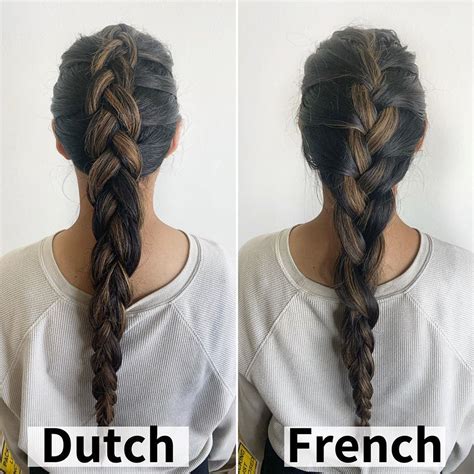Are you tired of your regular, boring hairstyle? Do you want to try something new and exciting? If so, you should definitely consider getting a Dutch braid or a French braid. Both of these hairstyles are beautiful, versatile, and easy to do. But what are the differences between them? And which one is right for you?

Dutch Braids vs French Braids: What’s the Difference?
The main difference between a Dutch braid and a French braid is the way that the hair is crossed over. In a Dutch braid, the hair is crossed over from the bottom, while in a French braid, the hair is crossed over from the top. This results in a different look for each braid: Dutch braids are more voluminous and have a more textured look, while French braids are more sleek and elegant.
Which One Is Right for You?
The best way to decide which braid is right for you is to consider your hair type and your personal style. If you have thick, heavy hair, a Dutch braid will be a better choice for you because it will help to keep your hair under control. If you have thin, fine hair, a French braid will be a better choice for you because it will help to create the illusion of volume.
In terms of personal style, Dutch braids are more casual and sporty, while French braids are more formal and elegant. If you’re looking for a hairstyle that will work for both everyday wear and special occasions, a French braid is a good choice.
How to Do a Dutch Braid
- Start by brushing your hair to remove any tangles.
- Divide your hair into three equal sections.
- Cross the right section over the middle section.
- Take a small section of hair from the left side and add it to the right section.
- Cross the new right section over the middle section.
- Take a small section of hair from the right side and add it to the left section.
- Cross the new left section over the middle section.
- Repeat steps 4-7 until you reach the end of your hair.
- Secure the end of the braid with a hair tie.
How to Do a French Braid
- Start by brushing your hair to remove any tangles.
- Divide your hair into three equal sections.
- Cross the left section over the middle section.
- Take a small section of hair from the right side and add it to the left section.
- Cross the new left section over the middle section.
- Take a small section of hair from the left side and add it to the right section.
- Cross the new right section over the middle section.
- Repeat steps 4-7 until you reach the end of your hair.
- Secure the end of the braid with a hair tie.
Tips for Getting the Perfect Braid
- Use a brush to remove any tangles from your hair before you start braiding. This will help to prevent the braid from getting snagged or tangled.
- Divide your hair into equal sections. This will help to ensure that the braid is even and balanced.
- Cross the hair sections over each other tightly. This will help to keep the braid secure and prevent it from coming undone.
- Add small sections of hair to each section as you braid. This will help to create a fuller, more voluminous braid.
- Secure the end of the braid with a hair tie. This will help to keep the braid in place and prevent it from unraveling.
Variations on the Dutch and French Braid
There are many different variations on the Dutch and French braid. Some of the most popular variations include:
- Fishtail braid: This braid is created by dividing the hair into two sections and then crossing the left section over the right section, and then the right section over the left section. This creates a fishtail-like pattern.
- Rope braid: This braid is created by twisting two sections of hair together and then wrapping them around each other. This creates a rope-like pattern.
- Waterfall braid: This braid is created by starting with a French braid and then allowing some of the hair to fall out as you braid. This creates a waterfall-like effect.
- Crown braid: This braid is created by braiding the hair around the head in a crown-like shape. This is a beautiful and elegant hairstyle that is perfect for special occasions.
The Benefits of Dutch and French Braids
There are many benefits to getting a Dutch or French braid. Some of the benefits include:
- They are versatile: Dutch and French braids can be worn for both everyday wear and special occasions. They can also be dressed up or down depending on the accessories you use.
- They are easy to do: Dutch and French braids are both easy to do, even for beginners. With a little practice, you will be able to master these braids in no time.
- They are protective: Dutch and French braids can help to protect your hair from damage. By keeping your hair in a braid, you can prevent it from getting tangled or broken.
- They are beautiful: Dutch and French braids are both beautiful hairstyles that can help you to look and feel your best. Whether you are going for a casual or formal look, a Dutch or French braid is a great choice.
Conclusion
Dutch braids and French braids are both beautiful, versatile, and easy-to-do hairstyles. The best way to decide which braid is right for you is to consider your hair type and your personal style. With a little practice, you will be able to master these braids in no time and enjoy all of the benefits they have to offer.
